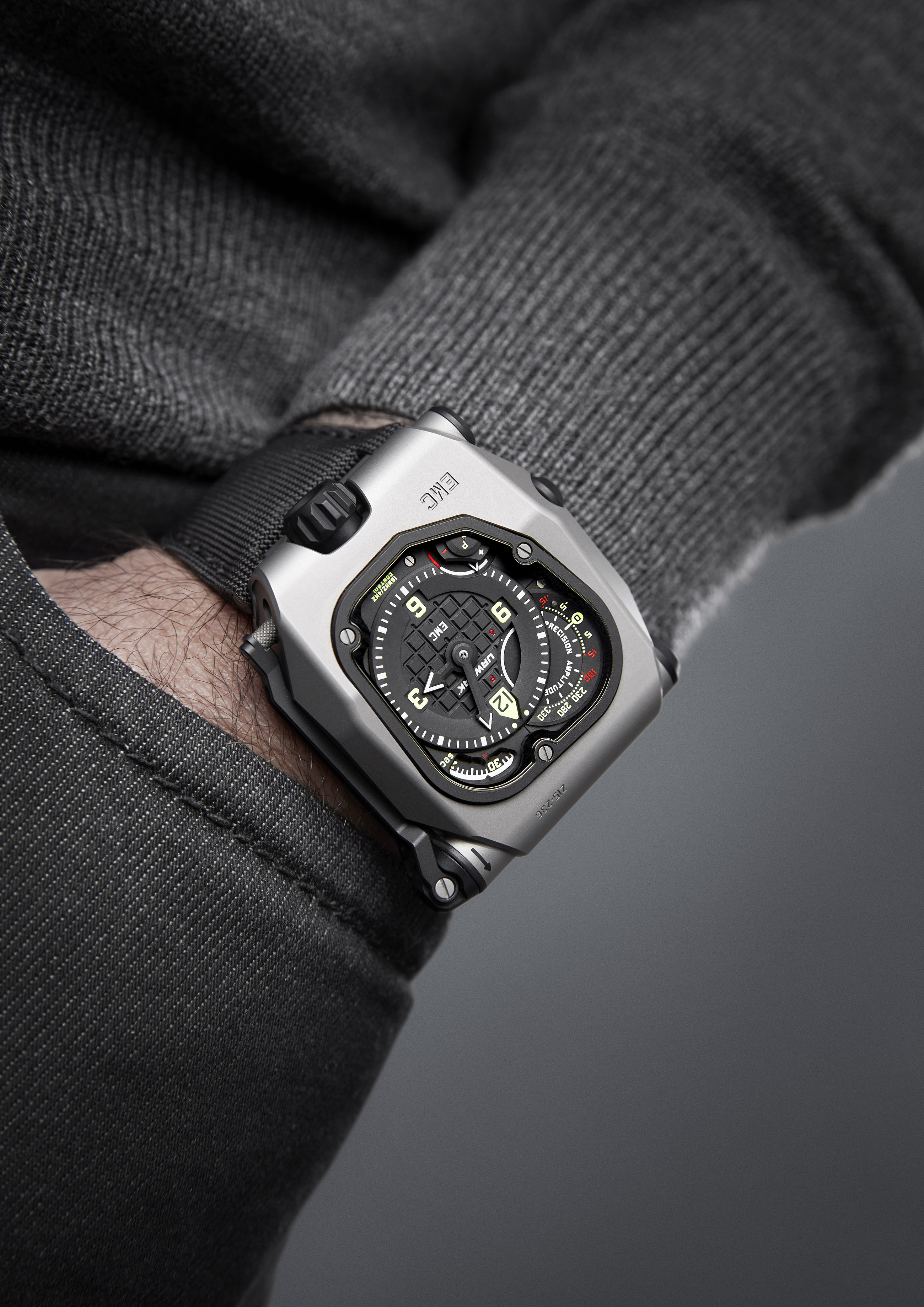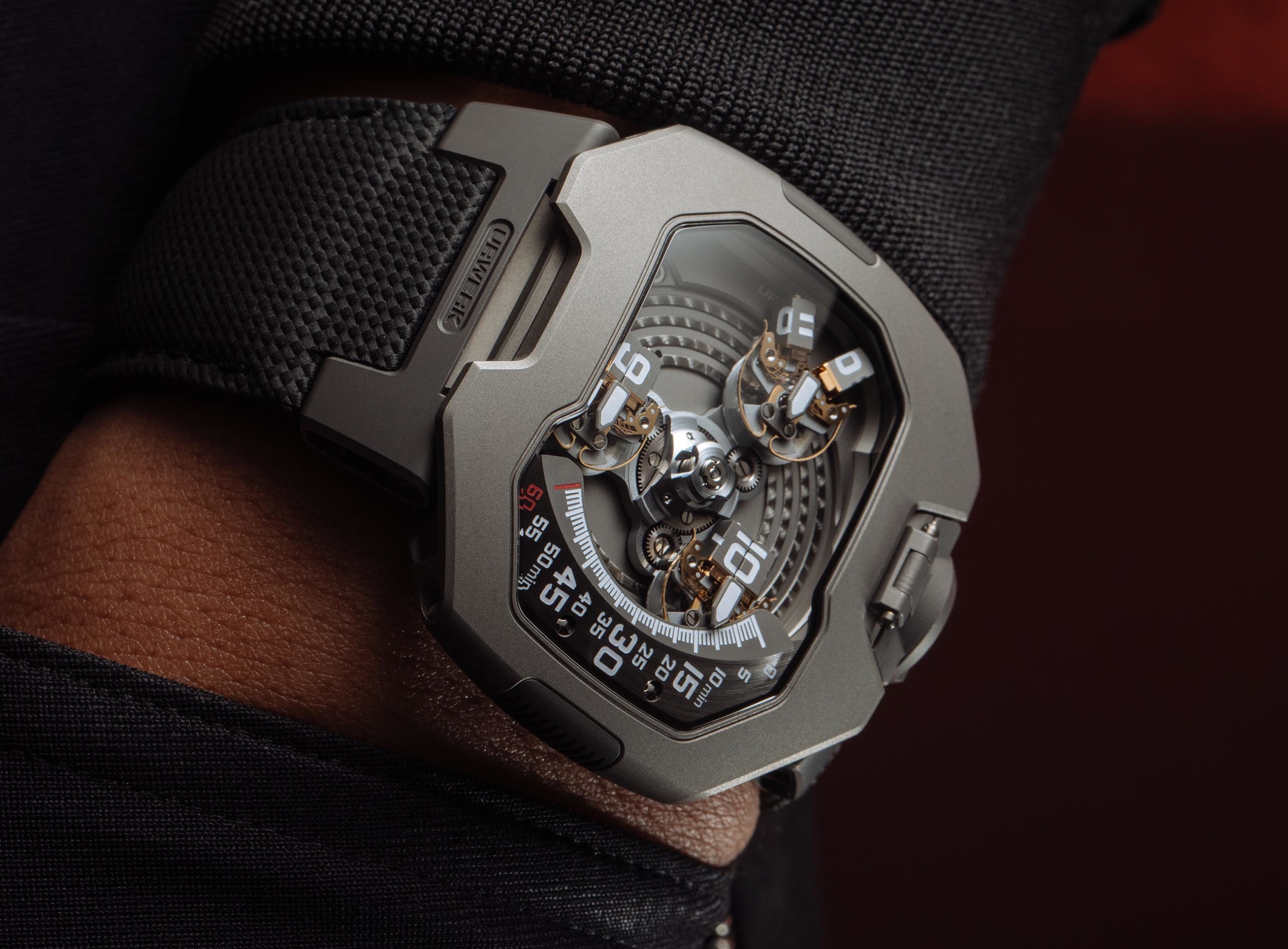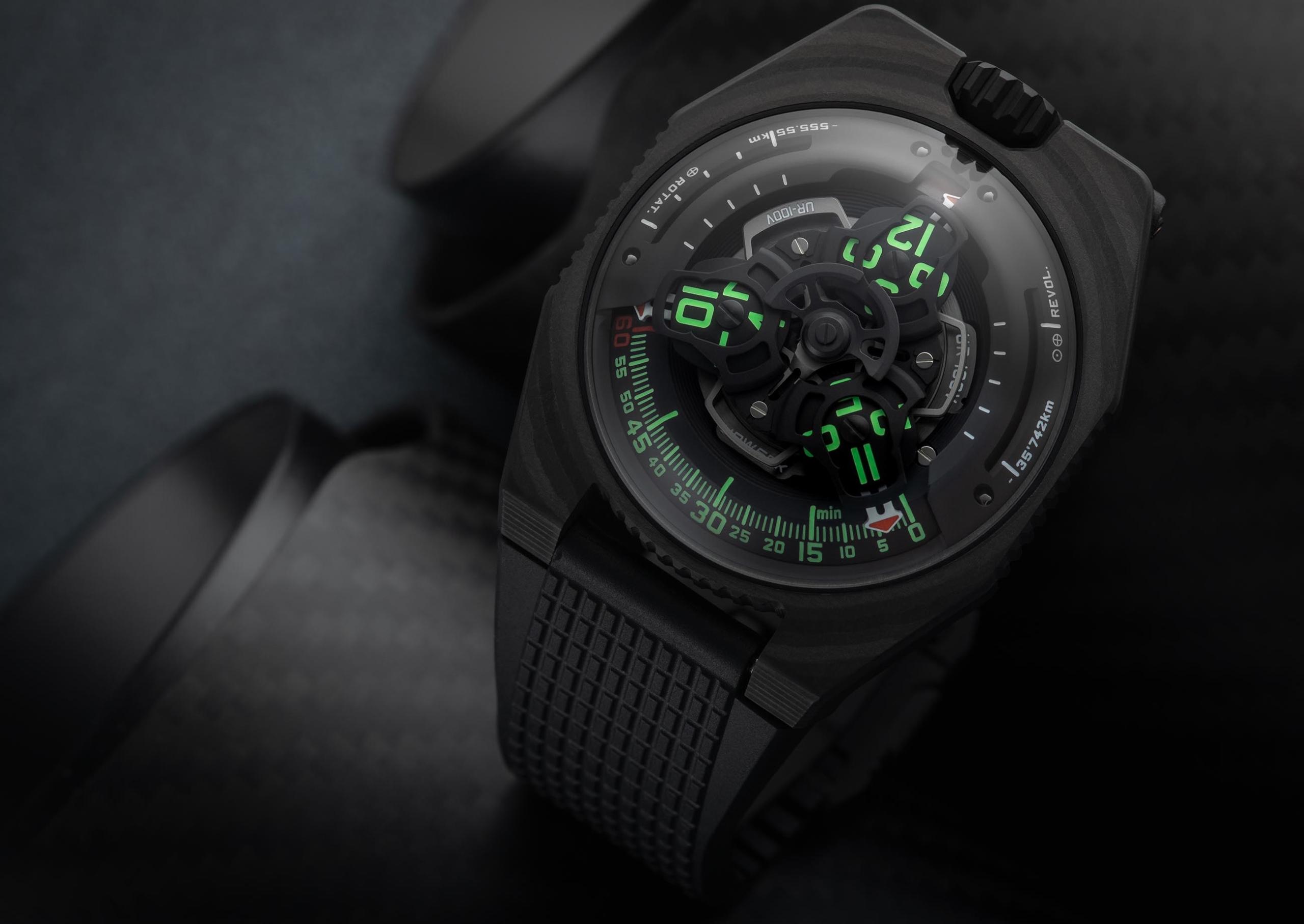Time: it’s by far the most valuable resource we have, so it’s worth measuring accurately. But no matter how well made or how well-regulated a wristwatch is, the unique activities and environments of individual owners can detrimentally affect chronometric performance. The new EMC enables its wearer to both monitor the health (amplitude) of the watch and its precision as worn on the wrist. Accuracy can then be easily adjusted for each owner’s lifestyle. Interactivity is at the heart of the EMC concept and is the real added value of the precision watch.


EMC “Time Hunter” is a fully 100% mechanical watch with electronically enhanced indications. It launches in two limited editions of 15 pieces each: one in natural titanium/steel and one with a military green ceramic-coated titanium/steel case.
EMC “Time Hunter” features a highly legible time display with central hours and minutes indicated with high-contrast black hands enhanced with bright white Super-LumiNova. A rotating disk displaying seconds at 1 o’clock is visually balanced by the power reserve indicator at its antipode at 7 o’clock. The Super-LumiNova also ensures high legibility at night as it glows in blue and white.
The dial in the top left corner at 10 o’clock displays the two EMC electronic indications: timekeeping precision to +/- 15 seconds per day and the amplitude of the balance. Turning EMC over reveals the fully in-house movement with integrated circuit board (the EMC ‘brain’), the top of one of the two mainspring barrels near the crown, and the top of the balance wheel and optical sensor on the winding handle side.
What benefit does EMC “Time Hunter” offer to its wearer?
When a watch is regulated (its precision tested and adjusted) by the watchmaker before it is sold, it is usually placed on a continually rotating arm in a fairly temperature-stable room. The rotating arm ensures that the watch spends fairly equal time all positions. But the timing of a mechanical watch changes slightly in each position as well as with changes in temperature. So in the real world of a watch on the wrist, how long it spends in each position (on average) will depend on the wearer’s activities: work, leisure, and how long each day it is actually worn. Two different people wearing the same watch for a week will find that its accuracy differs because the watch will have experienced different positions in different activities over the week.

EMC enables the wearer to note how many seconds the watch gains or loses in a week (or month), to adjust the precision, and then test that precision using the EMC function to confirm that the adjustment is correct. This extra functionality allows EMC is be fine-tuned to be as precise as possible for a specific wearer’s lifestyle and even to evolve with any changes.
How it works
The fold-out crank handle is first wound to generate power for the EMC indications,– there are no batteries – which is then stored in a super capacitor. After winding, a hand indicates either δ (processing underway) or P (not enough power). The EMC hand will then first indicate the movement’s precision to +/- 15 seconds per day for a few seconds, followed by the amplitude of the balance, the latter being a good indicator of the health of a movement and if it requires servicing. As well as these two indications, a LED on the precision display between -5 and -15 seconds will shine either green for “all okay,” or red if one or both of the EMC indications fall outside acceptable parameters.
The precision of the movement can then be simply adjusted faster or slower by turning the screw on the back of the watch. This allows the user to adjust the time to suit their own lifestyle.
What is amplitude and why does EMC measure amplitude?
While the concept of precision (as in how many seconds a day a watch is running fast or slow) is fairly easy to understand, amplitude of the balance is less obvious. The precision of a grandfather clock is regulated by a pendulum swinging back and forth, and the precision of a wristwatch is regulated by a balance wheel with a hairspring inside oscillating back and forth. «Amplitude» is how far in degrees the pendulum or the balance wheel moves through each oscillation.

While in theory both pendulums and balance wheels should be isochronous at all amplitudes, i.e. each oscillation should take exactly the same time whether swinging through a small or large distance, in practice the balance in most wristwatch movements should oscillate with an amplitude between 220° and 280° for maximum efficiency. Because the tiny balance wheel has relatively low mass and oscillates so quickly (back and forth four times each second), the slightest degradation in the lubricating oil of the balance staff (axel) manifests in lower amplitude. So balance amplitude is a good indicator for a movement being «healthy» or needing service.
The balance is the very «heart» of nearly every mechanical watch movement. And as with our own heart, the strength of its beat (amplitude) and the regularity of its beat (precision) are good indicators of health. «As a watchmaker, I am quite proud of URWERK developing, manufacturing, and regulating our own balance wheel for EMC as very few brands actually make and regulate their own balances and they really are the heart of mechanical movements,» explains URWERK’s co-founding master watchmaker Felix Baumgartner.





… [Trackback]
[…] Read More Information here to that Topic: cronotempvscollectors.com/urwerk-remembering-the-emc-time-hunter/ […]
… [Trackback]
[…] Information on that Topic: cronotempvscollectors.com/urwerk-remembering-the-emc-time-hunter/ […]